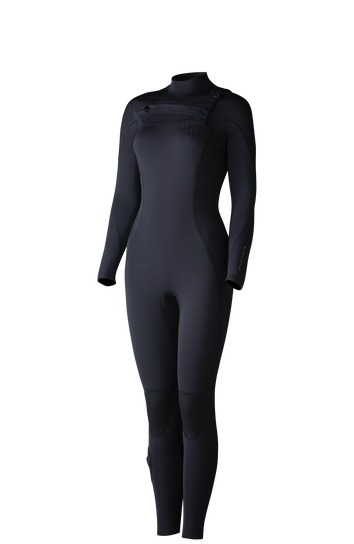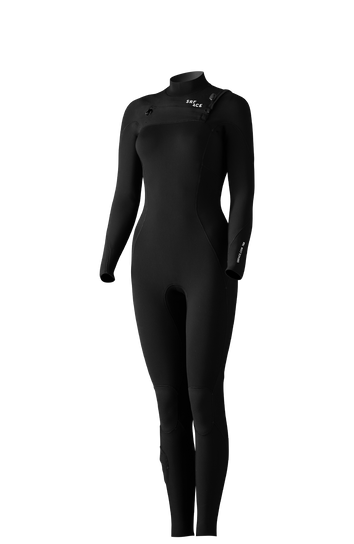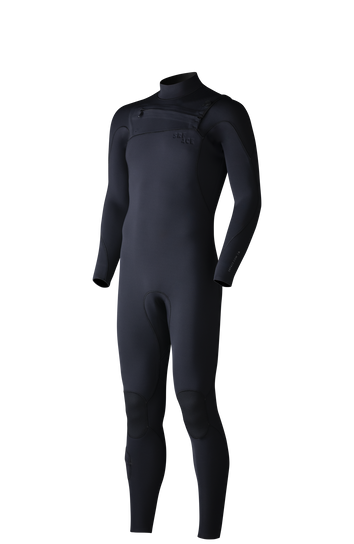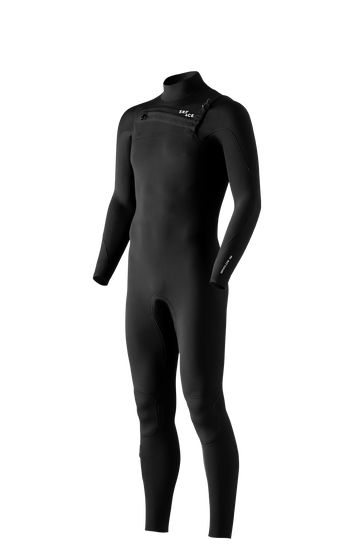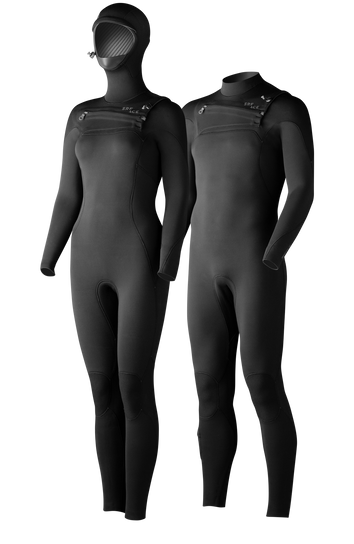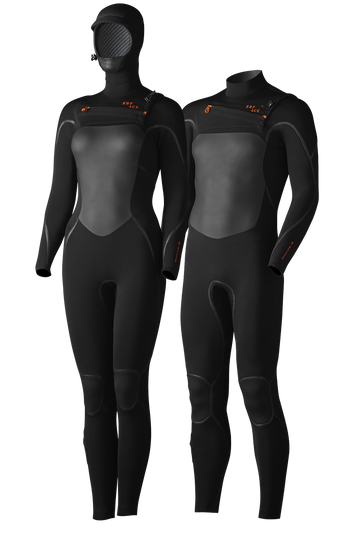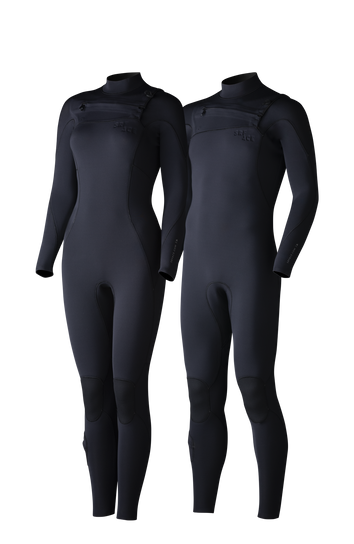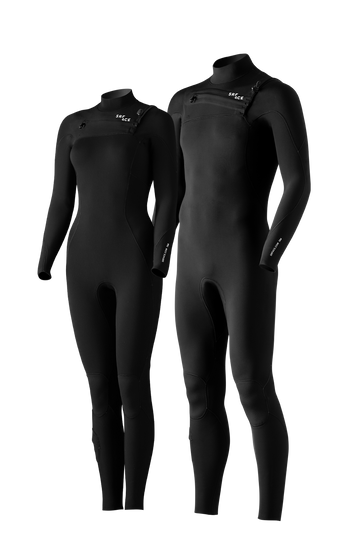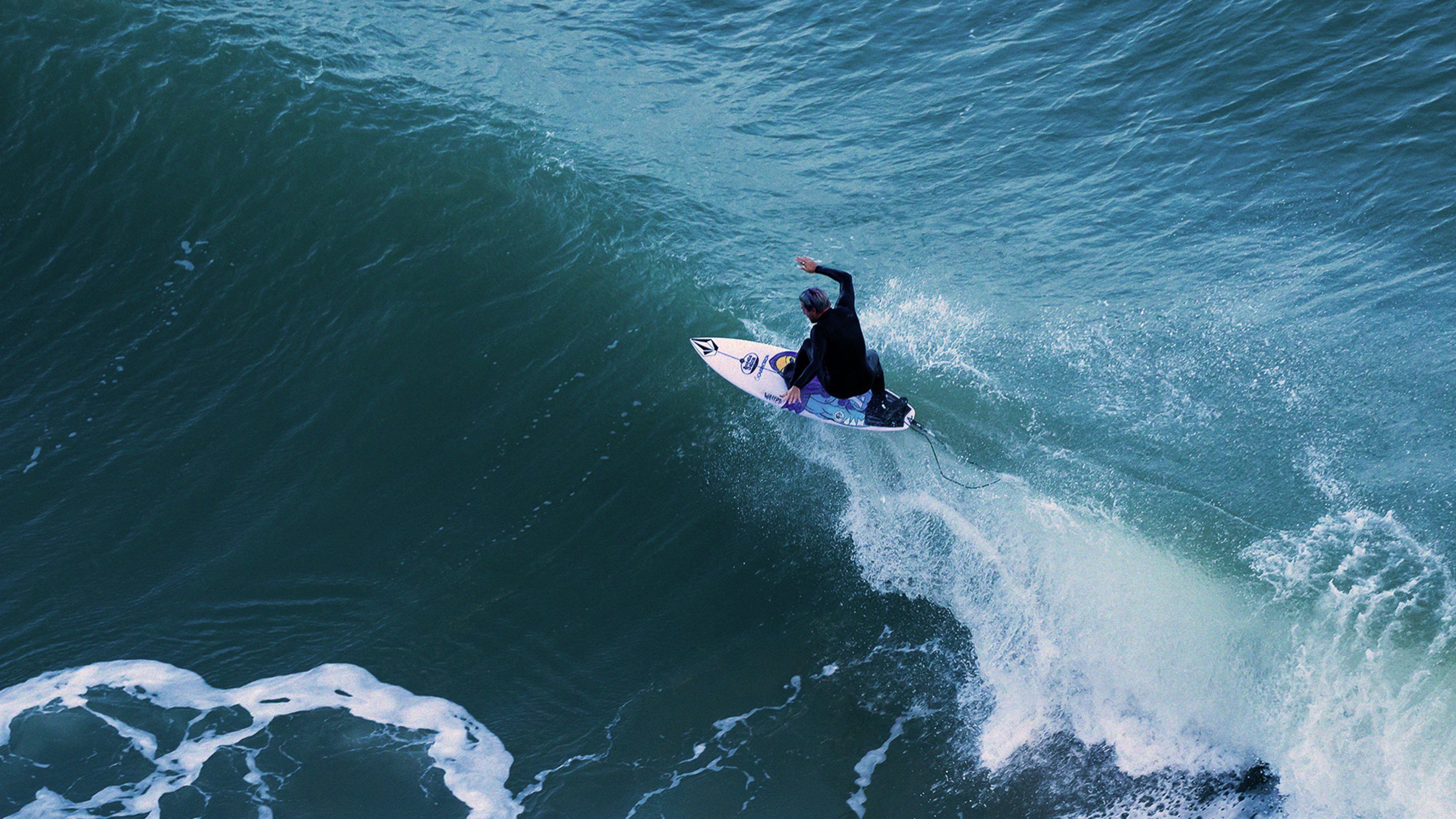
WHAT IS A SPRING / AUTUMN WETSUIT?
Spring and autumn wetsuits are almost always 4/3 mm full suits. Don’t let the term spring suit confuse you. This term can also refer to wetsuits with short arms, short legs or shorties. They’re ideal for European warm summer conditions. But then why call it a spring suit? The term spring suit originates from Australia, where generally the water is warm and you only need wetsuits in spring, autumn, and winter. In Australian summer, boardshorts are the go-to water wear. Because of this, a short leg long sleeve wetsuit would be perfect for Australian spring. So what is the best wetsuits for European spring and autumn? In our opinion it’s a full suit with 4/3 mm neoprene thickness. An absolute must-have in your wetsuit quiver.
Choose your wetsuit
ALL-SEASON WETSUIT
A 4/3mm full suit sits in between a 3/2 mm summer wetsuit and a warm 5/4 mm winter wetsuit. But that doesn’t mean you need to own all three thicknesses to surf all year. Actually, if you’re not very fond of surfing in winter, the 4/3 mm might be the only wetsuit you’ll need to own. The 4/3 mm wetsuit is great for every season, especially if you’re located in southern Europe. It’s warm enough for cold morning sessions but still thin and flexible enough to last through summer. If you’re located more to the north of the continent, a 4/3 mm will offer you more flexibility and enough warmth starting around March. In addition, it provides a little more comfort and insulation in summer than traditional summer wetsuits. In the end, it all comes down to where and when you surf. Use our Thickness Calculator to find the right thickness for the your region and season.

THE ALL SEASON WETSUIT FOR SPAIN, PORTUGAL, AND THE OSUTH OF FRANCE
If you want to own just one wetsuit, we recommend a 4/3 mm wetsuit as your all-season wetsuit for Spain, Portugal and the south-west of France. Great for both colder and warmer days. If you don’t mind owning more than one wetsuit we recommend also buying a 3/2 mm wetsuit for summer and warmer days.
THE BEST SPRING AND AUTUMN WETSUIT FOR FRANCE
The SRFACE 4/3 mm spring wetsuit offers you more flexibility starting around March, right until the water and air temperatures heat up. Of course, the 4/3 mm wetsuit works great for the colder months too, from September all the way through to November.
Featured wetsuits
THE BEST COLD WATER WETSUIT FOR NORTHERN EUROPE
The United Kingdom, the Netherlands, Belgium, Norway, and Denmark… let’s face it, it’s cold there. Even in summer you rarely get to surf in less than 4/3 mm. A 4/3 mm wetsuit is great for ‘summer surfers’ as their all-season wetsuit, and for people who surf through winter as their second wetsuit for a little more flex on warmer days.
If you want to learn more about choosing the right wetsuit thickness, have a look at a wetsuit thickness guide. You can also use the SRFACE wetsuit Thickness Calculator below to find the right wetsuit thickness based on your location and time of the year you would like to surf.
SEAM CONSTRUCTIONS SUITABLE FOR A SPRING OR AUTUMN WETSUIT
Similar to winter wetsuits, spring / autumn wetsuits work best if the performance, construction, and quality of the wetsuit are up to scratch. There are different seam construction options for spring / autumn wetsuits. Choose a high-end seam construction for a longer lifespan of your wetsuit and at all costs, avoid flatlock seams in any cold water wetsuit. They are not waterproof and will cool you down quickly. Choose flatlock seams only for summer wetsuits, such as shorties.

GBS SEAMS
The most common, but not the most high-end seam construction for all-season and winter wetsuits, is GBS. Glued and blind stitched seams prevent water from entering your wetsuit. To create a GBS seam, we first glue the edges of the neoprene panels together to prevent water from entering the wetsuit. Thereafter, we blind stitch the seams together on the outside, inside, or both sides of the neoprene panels. The needle doesn’t penetrate the neoprene completely, but only stitches through half of the neoprene panel to prevent leakage.

SEALED SEAMS
Liquid rubber sealed seams are a step up from traditional glued and blind stitched seams. A liquid neoprene seal can be applied on top of the stitching. This reinforces a traditional glued and blind stitched seam and creates a sealed outside seam. Therefore, you’ll usually find sealed seams on high-end wetsuits. A sealed seam offers an extra layer of protection from water entering your wetsuit. This durable construction lasts longer than normal GBS seams. Although not as thin and clean, S-seal seams are usually more durable and less easy to crack than Powerseams. We can also reinforce high-end wetsuit seams on the inside. We use neoprene tape to create an extra layer of protection against leaks. It also protects the skin against rash caused by the seam. Machine applied neotape 2.0 is the latest development in inside seam reinforcement.

DOUBLE LINED VS. SINGLE LINED NEOPRENE
Should a spring / autumn wetsuit have a single lined rubber chest and back or is double nylon better? Single lined neoprene is a rubbery type neoprene. You’ll find single lined neoprene mainly on chest and back panels. This smooth water repellant neoprene type reduces wind chill at the core of your body where you need to stay warm most. Single lined neoprene achieves this by letting water droplets run off the material rather than being absorbed by the lining. Double lined neoprene, or double nylon, is jersey-lined neoprene. Double lined neoprene is more resistant to abuse and is less likely to tear. But the lining does hold water, which will cool down by wind, causing wind chill. It might look cool, but it’s not warmer.

WHAT IS THE BEST WETSUIT LINING COMBINATION?
Most modern wetsuits use a combination of both single lined and double lined neoprene. Panels are strategically placed to enhance their capabilities where needed. Single lined panels are used in areas where you need wind chill protection. While double lined panels are used where more flexibility or strength is needed, such as armpits, arms, and legs. Plush quick-dry inside lining provides extra warmth on the body panels where you need it most. Plush lining makes it possible to make fully double lined wetsuits without single lined chest and back panels. But to optimize a wetsuit for warmth, it’s best to choose a single lined chest and back as they help to retain body heat. With single lined panels you can consider using a slightly thinner, more flexible wetsuit in colder water.

Ready to surf?
Shop from €159



